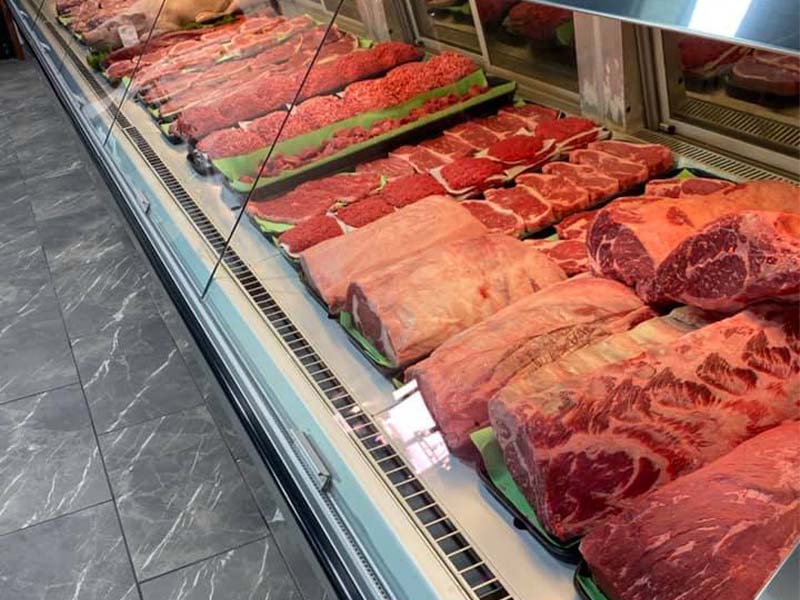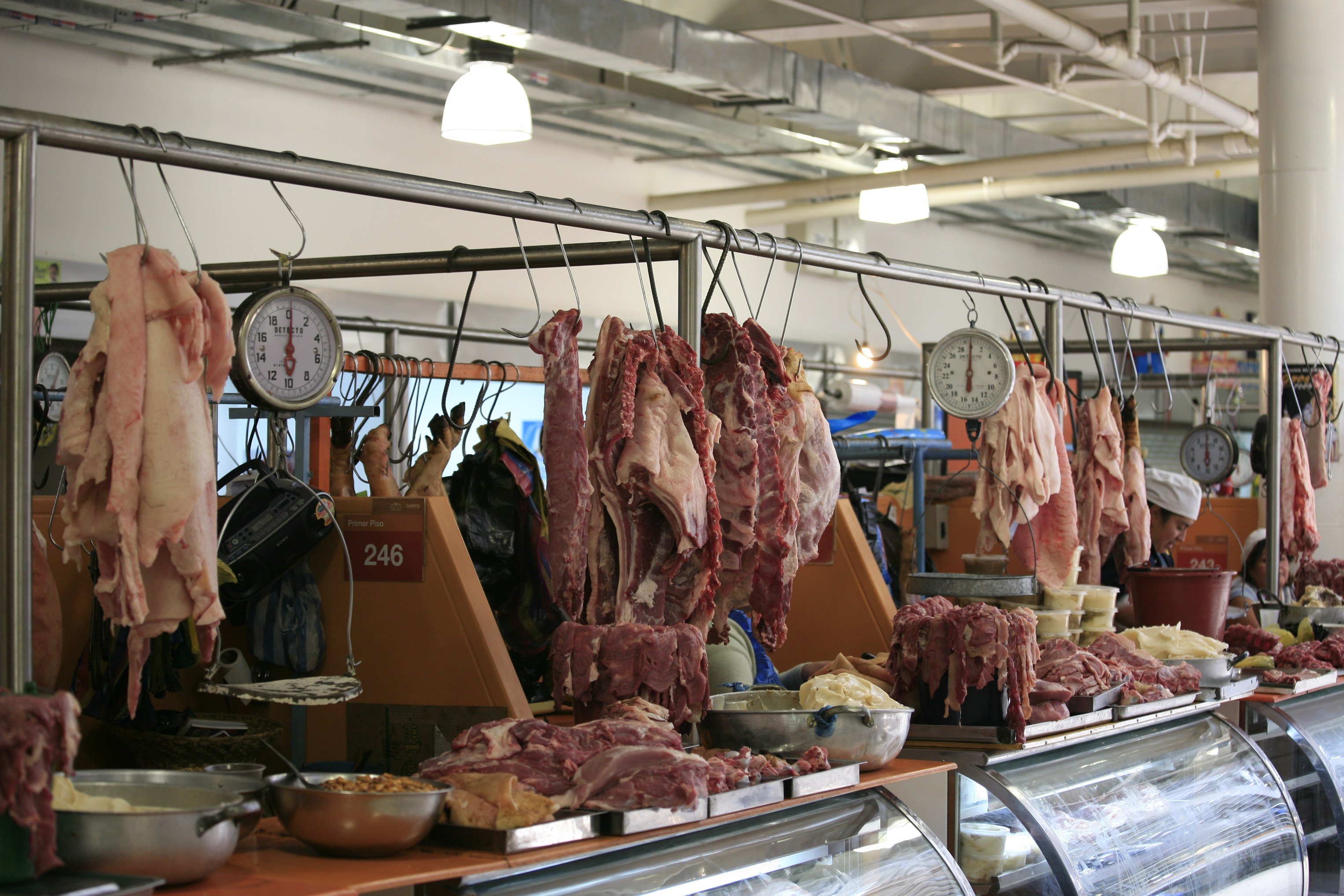Bagley Farms Meat Market Edwardsville IL: Your Trusted Resource for High-Quality Meats
Bagley Farms Meat Market Edwardsville IL: Your Trusted Resource for High-Quality Meats
Blog Article
Discover the Art of the Butcher's Cut in a Modern Meat Market
In the ever-evolving landscape of contemporary meat markets, the butcher's cut has transcended its traditional roots, combining age-old workmanship with contemporary methods. bagley farms meat market edwardsville il. Today's butchers are not simply processors of meat; they are educated craftsmens that highlight sustainability and honest sourcing. Their proficiency in selecting and preparing cuts customized to particular cooking requirements uses an unequaled eating experience. Yet, what really sets the modern butcher apart is their capability to build a deeper connection between consumers and the beginnings of their meat. How do these masters equilibrium custom with technology, and what implications does this have for the future of meat usage?
Evolution of Butchery Techniques

The mid-20th century saw butchery techniques even more improved by scientific understandings right into muscle biology and meat aging, enhancing both inflammation and taste. Advancements like vacuum packaging and refrigeration prolonged item shelf-life, enabling butchers to branch out offerings and improve quality assurance. This period likewise marked the surge of specific tools, such as band saws and meat slicers, which raised accuracy and performance in meat processing.
The 21st century has presented digital technology right into the butchery realm. Digital systems currently aid in monitoring animal provenance and maximizing cuts to satisfy specific consumer preferences. In addition, a renewal in artisanal butchery has arised, blending standard skills with modern-day knowledge to deal with consumers looking for ethical and lasting meat options. This development underscores a dynamic interaction between practice and development, conference contemporary demands while maintaining the craft's heritage.

Comprehending Meat Cuts

Understanding the details of meat cuts is crucial for both butchers and customers looking for quality and value. Each cut originates from a various part of the animal, presenting one-of-a-kind tastes, structures, and cooking methods. Proficiency of these differences not only boosts culinary experiences but additionally maximizes the energy of each carcass. For butchers, exact cuts reflect ability and respect for the craft, ensuring very little waste and optimum return.
The key categories of meat cuts consist of primal, sub-primal, and retail cuts. Primitive cuts, such as the loin, rib, and chuck, are the large areas initially divided from the carcass. Butchers then break these down further into sub-primal cuts, prior to finally generating retail cuts available to customers, like ribeye or tenderloin. Each check it out stage needs mindful interest to physiological structure and muscle mass make-up.
Recognizing muscle structure is crucial; muscle mass made use of more frequently by the pet often tend to be tougher and are best suited for sluggish food preparation approaches, while less-used muscles, like those discovered in the loin, are a lot more tender and perfect for grilling or roasting. Experience with these differences encourages customers to make informed choices, enhancing their culinary endeavors.
Picking Top Quality Meat
Picking the ideal meat involves even more than simply picking an aesthetically attractive piece from the display screen. The art of choosing quality meat calls for a discerning eye and knowledge of certain characteristics that signify quality and excellence.
Second of all, think about the marbling, which describes the white flecks of fat within the muscular tissue. Appropriate marbling is a key indication of tenderness and taste, as it melts throughout cooking, boosting the meat's juiciness. Remember, greater marbling frequently associates with premium quality cuts, such as USDA Prime.
Appearance is another critical variable; meat needs to feel solid to the touch, not slimy or excessively soft. In addition, bear in mind the aroma. Fresh meat ought to have a tidy, neutral scent, without any sour or off-putting smells.
Pairing Cuts With Food Preparation Techniques
Efficiently pairing cuts of meat with the appropriate cooking methods is vital for accomplishing ideal taste and structure. These approaches boost the meat's all-natural tastes and make sure a juicy coating.
Alternatively, harder cuts like brisket and chuck roast are abundant in collagen, which damages down into gelatin when cooked slowly. These cuts are perfect for braising or slow roasting, allowing the meat to tenderize with time and create deep, intricate tastes. Likewise, cuts such as short ribs and pork shoulder fare well with slow-cooking methods, where expanded cooking times change their robust textures into delicious meals.
Lamb shanks and oxtail, which require long term food preparation to tenderize, are perfect prospects for stewing or sluggish simmering. These approaches coax out abundant, hearty tastes while preserving moisture. By understanding the one-of-a-kind attributes of each cut, chefs and home chefs alike can raise their culinary productions, making sure each meal is both pleasing and remarkable.
The Butcher's Function Today
Navigating the advancing landscape of the contemporary meat market, the butcher's role today prolongs past mere prep work of cuts. Contemporary butchers are culinary artisans, teachers, and supporters for sustainable techniques. They connect the void between the ranch and the fork by making sure ethical sourcing, recognizing animal husbandry, and focusing on openness in the supply chain. This shift mirrors the growing customer demand for high quality over amount, where provenance and animal well-being are paramount.
Along with crafting exact cuts, butchers now engage straight with customers, using cooking Continue advice and customizing options to suit private demands and preferences. Their proficiency in meat aging, marbling, and flavor accounts encourages consumers to make educated choices, boosting their cooking experiences. This customized service exhibits the butcher's advancing role as a trusted consultant in the kitchen area.
In addition, butchers are pivotal in reducing waste, using entire pets to develop varied items such as sausages and stocks - bagley farms meat market edwardsville il. This extensive method not only appreciates the pet yet additionally straightens with modern sustainability objectives. By doing this, the modern butcher embodies both tradition and development, adapting to an ever-changing market while protecting the creativity and stability of their craft

Conclusion
The modern butcher's craft elaborately weaves standard strategies with contemporary innovations, stressing sustainable techniques and honest sourcing. Proficiency in comprehending diverse meat cuts and high quality signs encourages butchers to give educated recommendations, lining up specific cuts with ideal cooking techniques. This knowledge not only raises cooking experiences but additionally strengthens the link in between consumers and the beginnings of their food. By honoring historic methods while welcoming have a peek at these guys contemporary needs, the butcher's role stays essential in today's sophisticated meat market.
Report this page